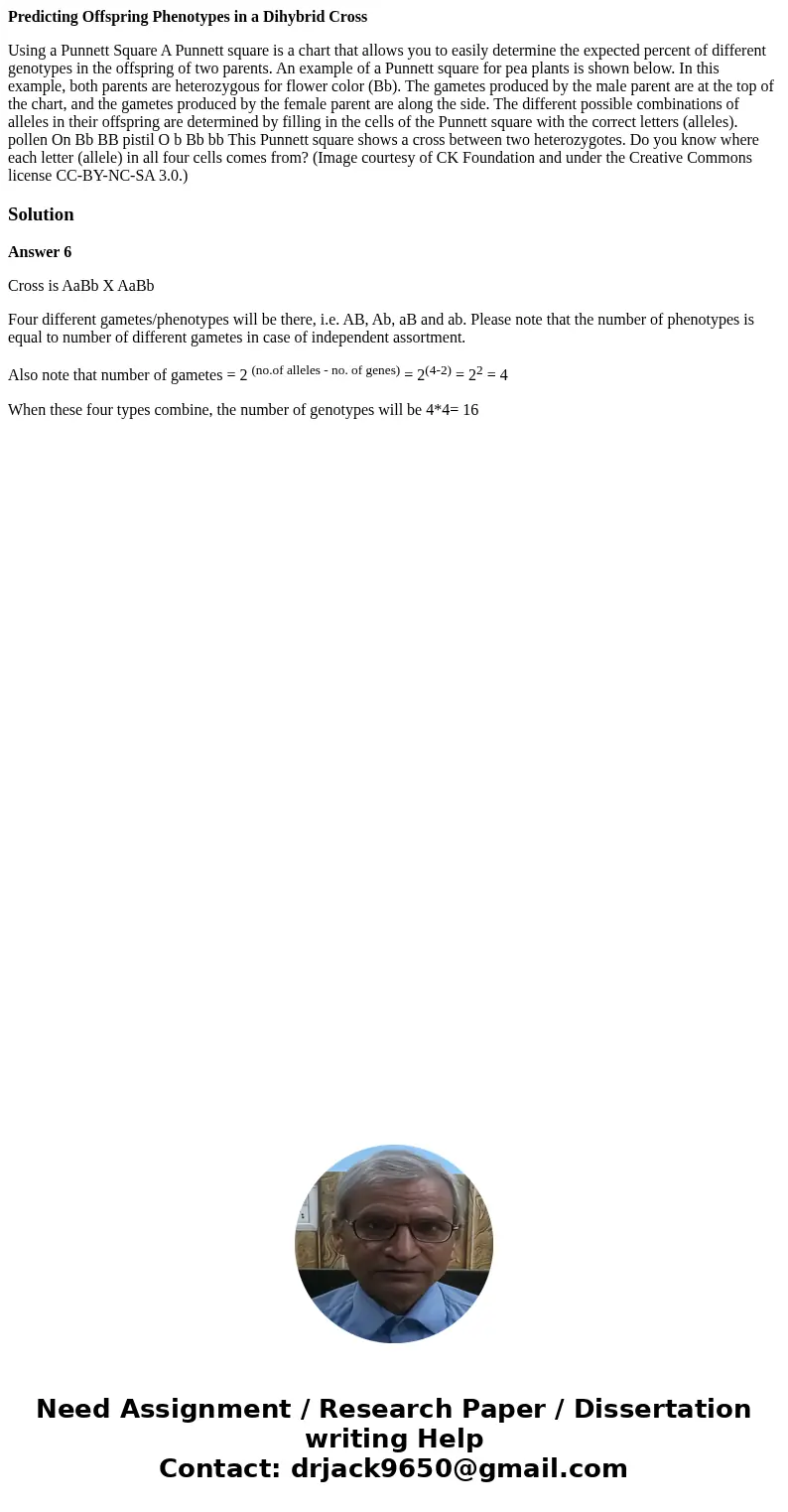Predicting Offspring Phenotypes in a Dihybrid Cross Using a
Predicting Offspring Phenotypes in a Dihybrid Cross
Using a Punnett Square A Punnett square is a chart that allows you to easily determine the expected percent of different genotypes in the offspring of two parents. An example of a Punnett square for pea plants is shown below. In this example, both parents are heterozygous for flower color (Bb). The gametes produced by the male parent are at the top of the chart, and the gametes produced by the female parent are along the side. The different possible combinations of alleles in their offspring are determined by filling in the cells of the Punnett square with the correct letters (alleles). pollen On Bb BB pistil O b Bb bb This Punnett square shows a cross between two heterozygotes. Do you know where each letter (allele) in all four cells comes from? (Image courtesy of CK Foundation and under the Creative Commons license CC-BY-NC-SA 3.0.)Solution
Answer 6
Cross is AaBb X AaBb
Four different gametes/phenotypes will be there, i.e. AB, Ab, aB and ab. Please note that the number of phenotypes is equal to number of different gametes in case of independent assortment.
Also note that number of gametes = 2 (no.of alleles - no. of genes) = 2(4-2) = 22 = 4
When these four types combine, the number of genotypes will be 4*4= 16

 Homework Sourse
Homework Sourse